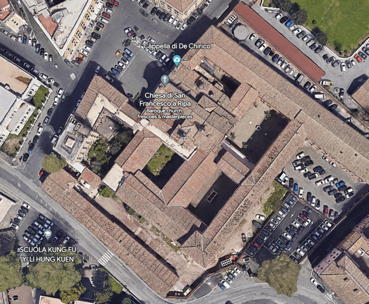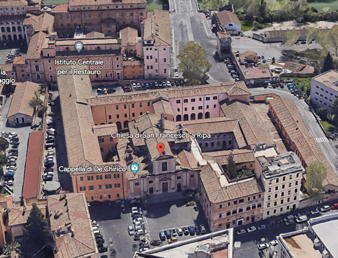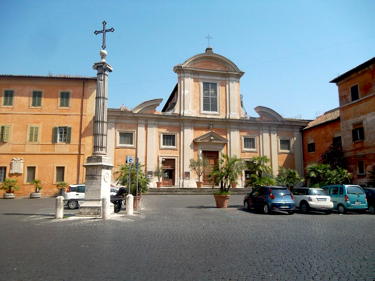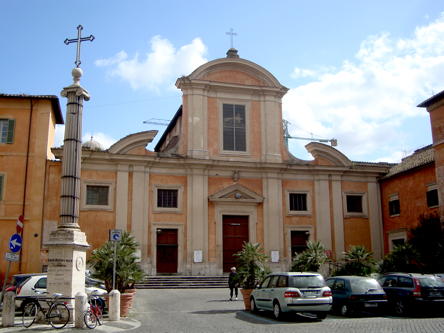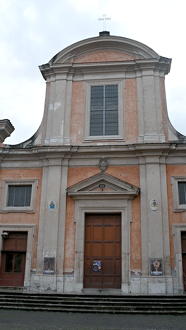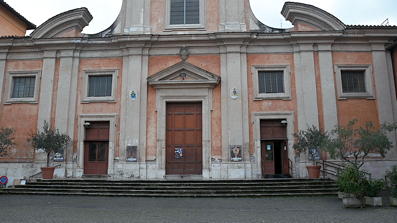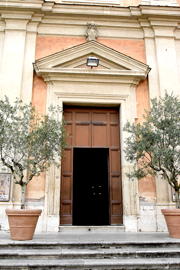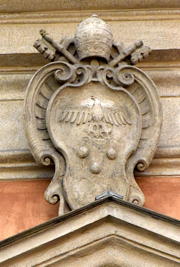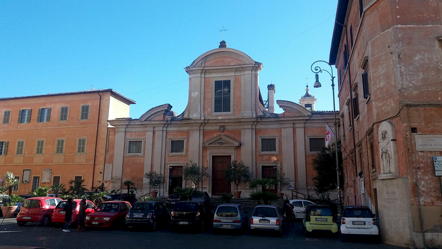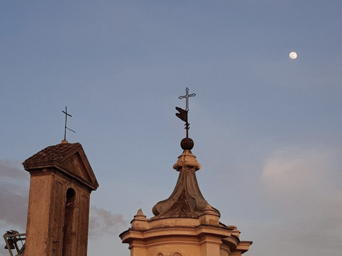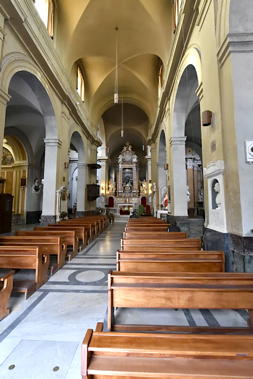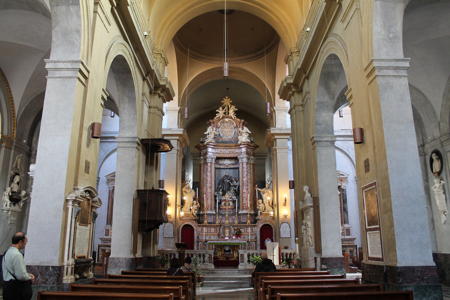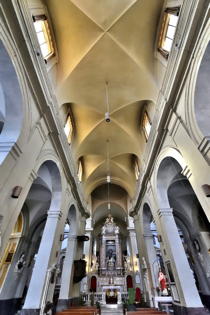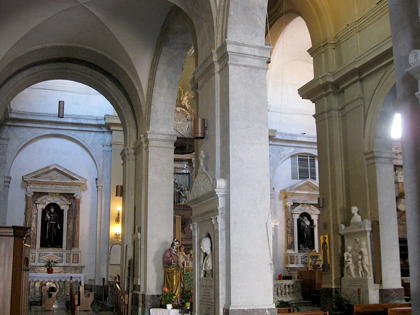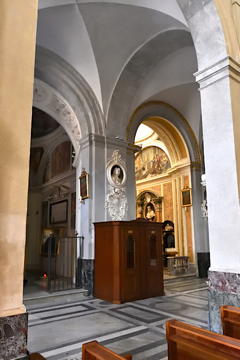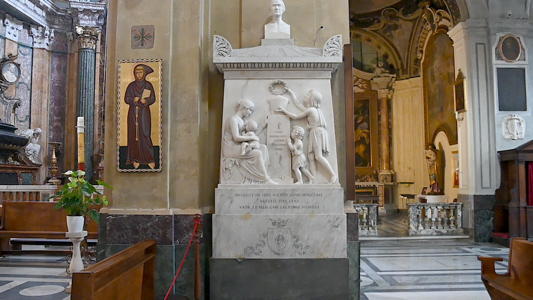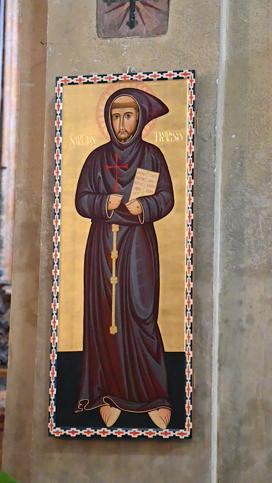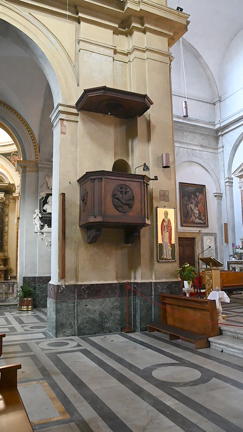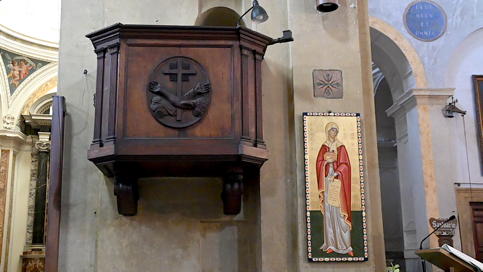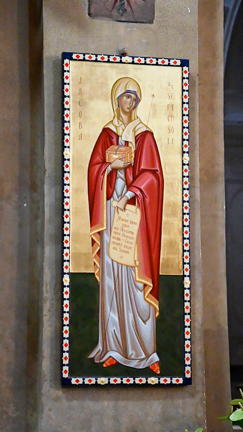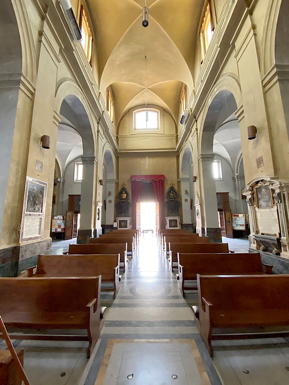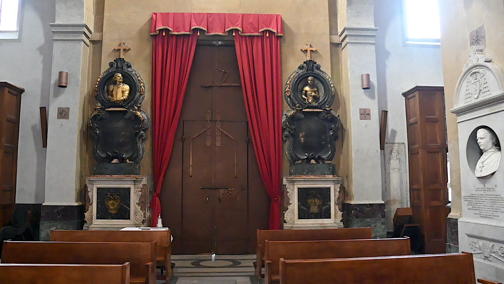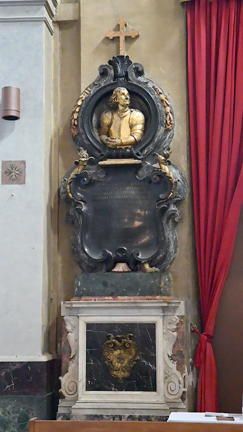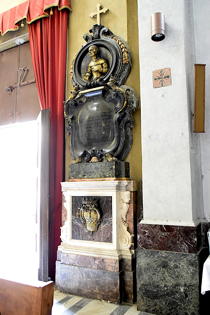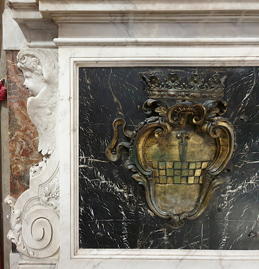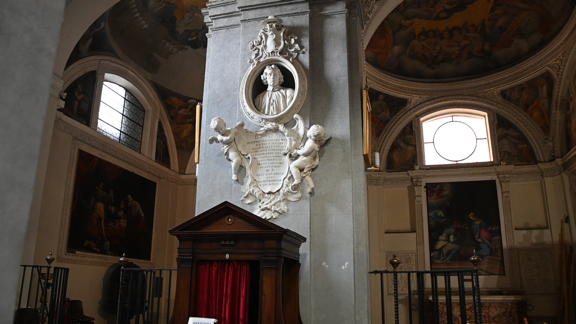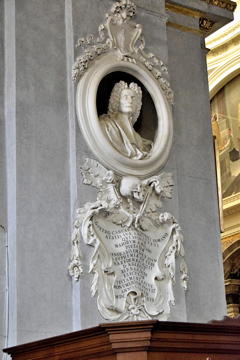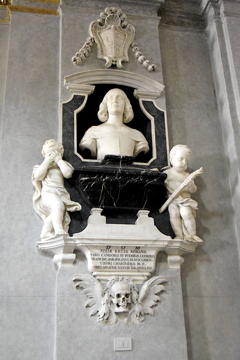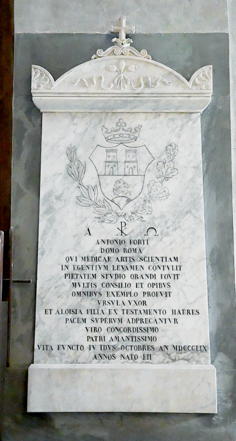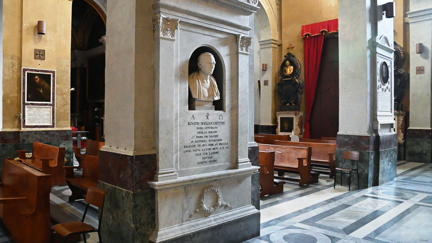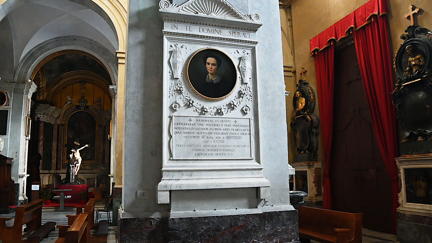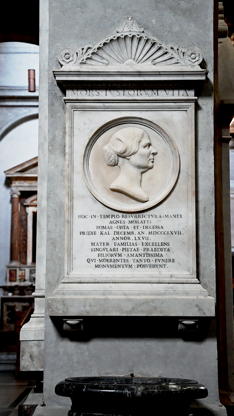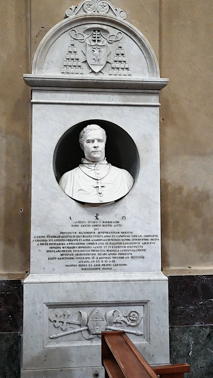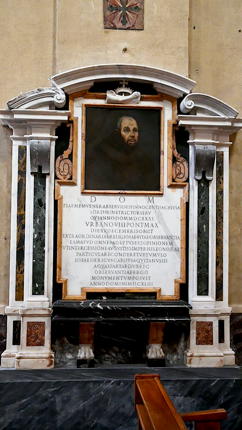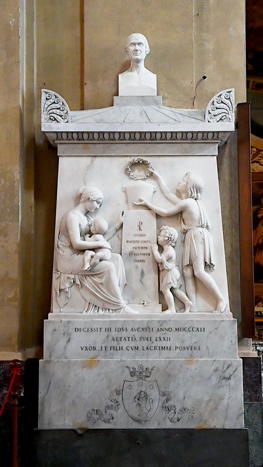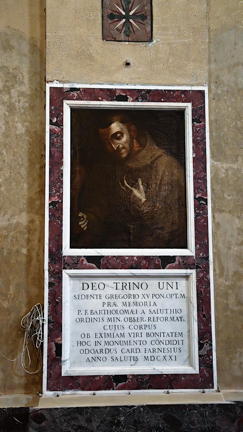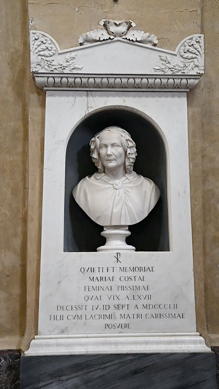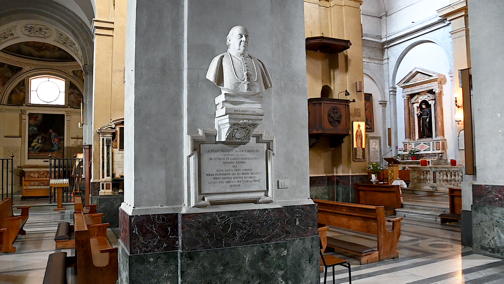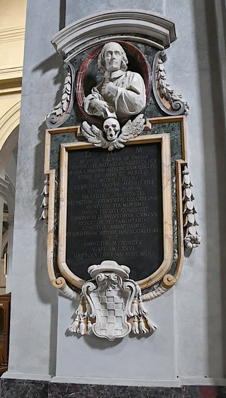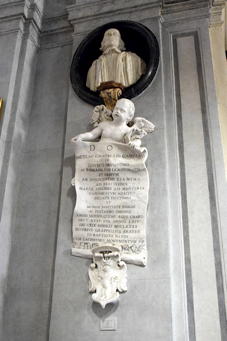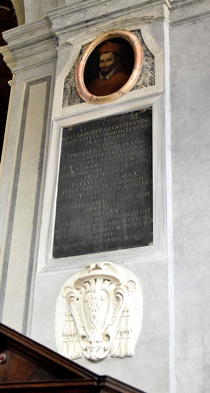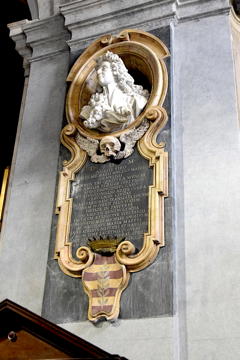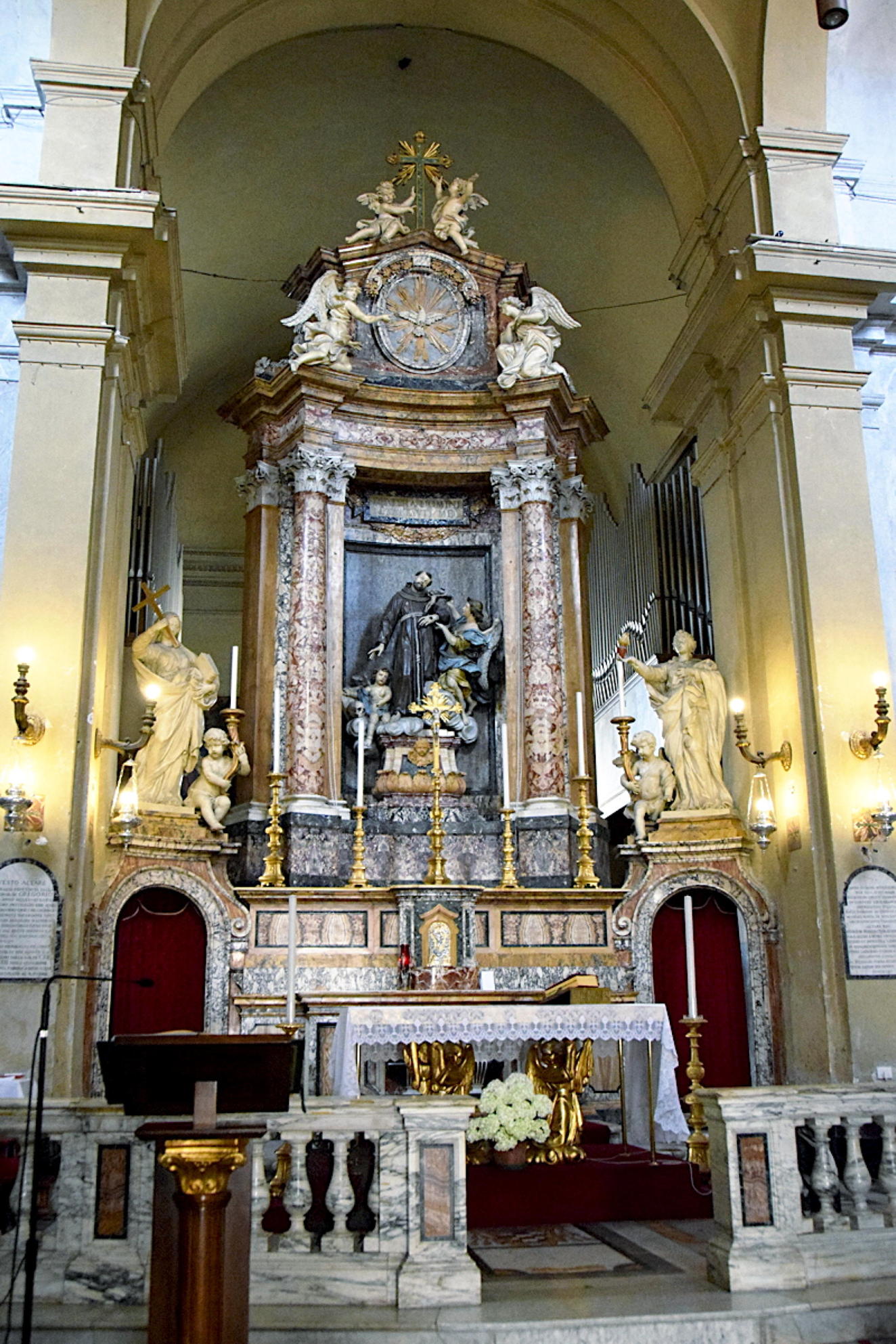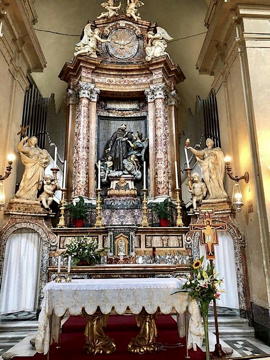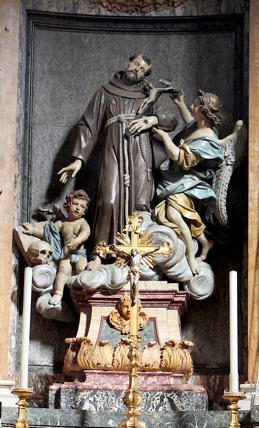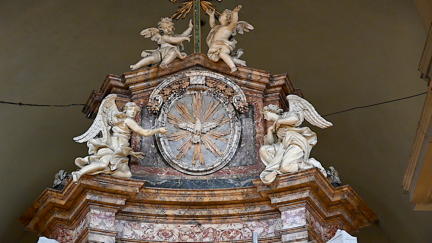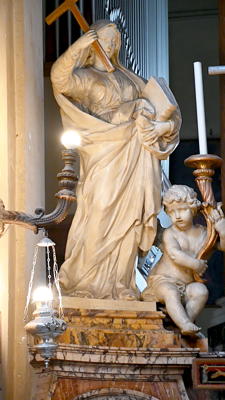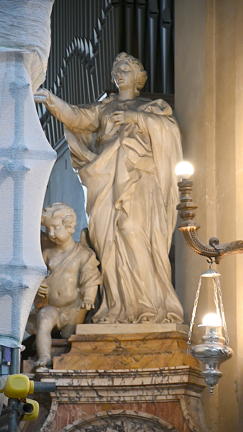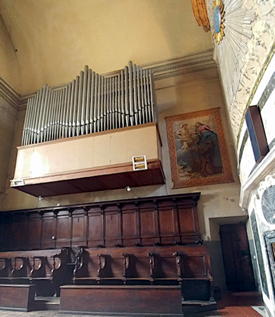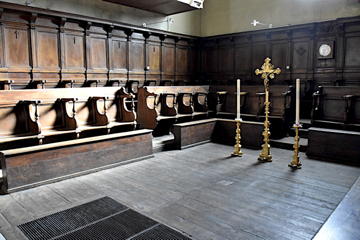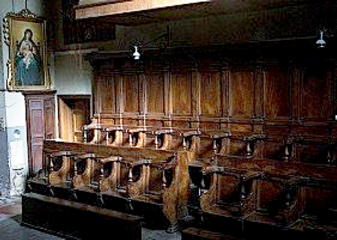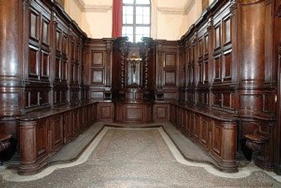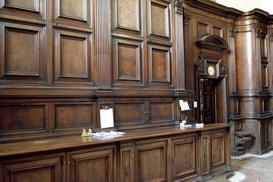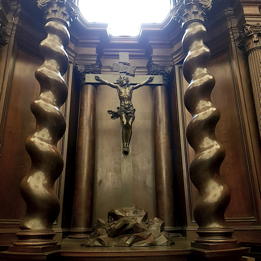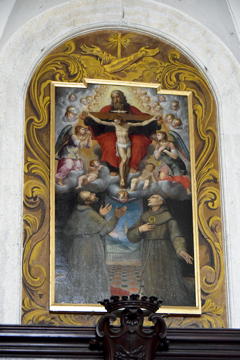San Francesco d'Assisi a Ripa Grande is a heavily restored 13th century convent church, now parochial and titular, at Piazza San Francisco d'Assisi in the south of Trastevere. It is dedicated to Saint Francis of Assisi because the adjacent convent hosted his visit to Rome in 1229. It is the first Franciscan church in Rome. The name is derived from an old gate on the Tiber called Ripa grande.
For reference, a plan of the church is available
here.
In the 10th century the Benedictines built a monastery and hospice for the benefit of the poor sick people and pilgrims. St Francis of Assisi visited Rome several times between 1209 and his death in 1226, and at times he stayed in the hospice. In 1229, Pope Gregory IX transferred the property to the Franciscans after the death of their founder.
In 1231 the Franciscans, who had found the complex in a state of decay, rebuilt the church while maintaining its size and shape and adapted the hospice to a convent, with the intention of keeping intact the cell that had housed the Saint.
In 1444, Pope Eugene IV assigned the monastery to the Friars Minor (observant), who, in 1579, rebuilt the old convent, equipping it with a cloister.
The changes to the medieval church took place in various phases, starting with the construction of chapels, sponsored by noble families, all set on the left side. In 1675 Cardinal Lazzaro Pallavicini financed a radical restoration project of the church, directed by
Mattia de Rossi as architect. Much of the fabric of the mediaeval church was kept, although it is now invisible. The vaults of the church and the façade were completely replaced and the chapels on the right were built while the columns in the nave were were fortified and incorporated into the current pillars. From 1737 to 1746 the High Altar was rebuilt twice.
In 1849, the
Garibaldians expelled the Franciscans and camped within the walls of the convent, thus leaving the Church closed; subsequently it passed to that of the Italian Republic, with the occupation by the Piedmontese troops in 1870, the Franciscans here were ordered to leave the Convent in1873.
The church was made parochial in 1906, and now has a parish covering southern Trastevere. In the mid 20th century the Franciscans recovered use of part of the convent, and their Provincialate is now here.
The title was established in 1960 by Pope John XXIII. The present titular of the church (as of 2023) is H.E. Cardinal Norberto Rivera Carrera, Archbishop of México.
